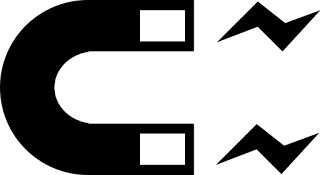What are rare earth magnets?
Rare earth magnets are magnets that contain rare earth elements. We've already covered these, but let's sum them up once more: Scandium, Yttrium, Lanthanum, Cerium, Praseodymium, Neodymium, Promethium, Samarium, Europium, Gadolinium, Terbium, Dysprosium, Holmium, Erbium, Thulium, Ytterbium and Lutetium. Bold elements are used for rare earth magnets. The other chemical elements are applied outside of the recycling industry.A Samarium-Cobalt is a ferromagnetic compound of one of two kinds of commercially available rare earth super-magnets. It's normally a bit cheaper than its counterpart, namely the Neodymium-magnet. In the future, there might even be a mega-magnet made out of Holmium, but research is still on the way.
 |
| NIB-Magnets are currently the most popular kind of magnet in the recycling industry. |
Samarium-Cobalt
When buying a magnet like mentioned above, it is always important to pick the right alloy. Should you need high resistance to demagnitization and decent stability under high temperatures, it is wisest to pick the Samarium-Cobalt compound. You have this available in two 'series' or scales, namely the 1:5 - and 2:17 Samarium to Cobalt ratio. The ratio means that there is either 1 Samarium atom for 5 Cobalt atoms or 2 Samarium atoms for 17 Cobalt atoms. Another advantage next to demag resistance and high thermal stability is its resistance to oxidation. A disadvantage of a Samarium-Cobalt magnet is that it may facture under cold temperatures. It also inclined to chip and crumble faster than a Neodymium magnet. The dicisive fact that makes this magnet less attractive than its counter part is the cost and the fact that its magnet strength is lower.Neodymium
A NIB-Magnet (abbreviated: Neodymium-Iron-Boron) is the most popular kind of super-magnet available. The reason for that lies in the high magnetic strength and (relatively) low cost. It's an alloy with Neodymium, Ferrum, Boron, but also with Aluminium, Nibium and Dyprosium. As opposed to the SmCo-magnet, the Nd-magnet is prone to oxidate. For that reason, a Nd-magnet is always coated with Tin, Nickel, Zinc or even gold. NIB-magnets used to be quite expensive to produce, yet they have less expensive since the 90's.Needless to say, most recycling industry magnets are NIB magnets.
Holmium-Yttrium
First this: as far as I know, there isn't a Holmium-Yttrium magnet commercially available. Google results are quite fuzzy about this though. Despite knowing that Holmium has the highest magnetic moment of 10,6 µB, it hasn't found real commercial use as recycling magnet.I'll look into Holmium magnets every now and then and provide you with information as soon as I can find it.
No comments:
Post a Comment